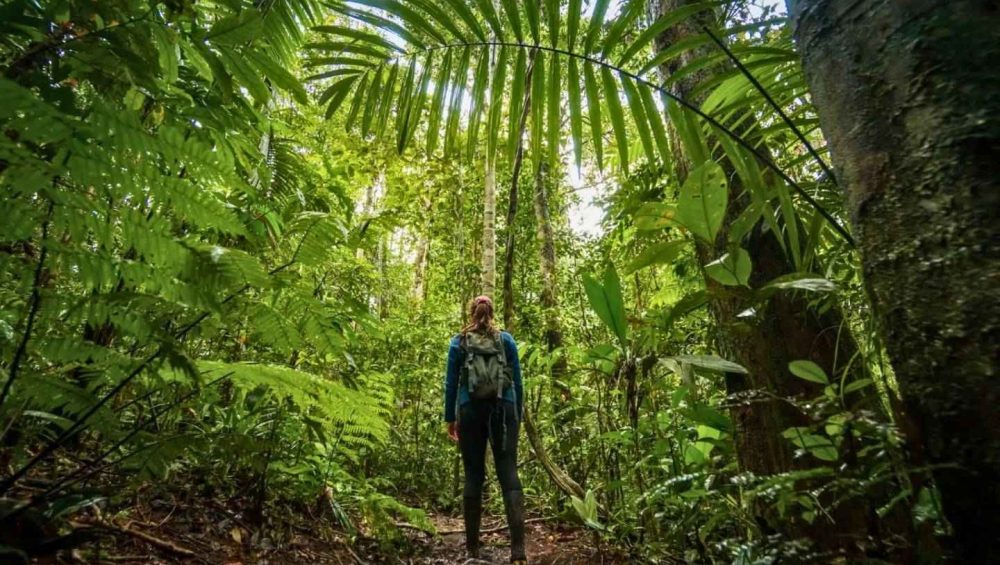The Amazon rainforest Peru is one of the most surprising destinations in the country. With incomparable biodiversity, landscapes covered with abundant vegetation, and the great Amazon River as the protagonist, this territory offers a unique experience, ideal for an adventure trip in Peru. Here, you can enjoy everything from jungle walks to boat rides at dawn or encounters with wildlife in their natural habitat.
In addition, this vast territory is not just nature. There are also Amazonian towns, indigenous communities, and conservation centers, which make the trip more interesting; thus, the Peruvian Amazon is ideal for undertaking an authentic adventure, where each day offers something different: jungle sounds, starry skies, unique flavors, and river routes that connect with the deepest part of Peru.
What makes the Peruvian Amazon Rainforest unique?
The Peruvian Amazon rainforest stands out for its biodiversity. Thousands of species of birds, mammals, reptiles, fish, and plants inhabit its vast territories. It is one of the richest ecosystems on the planet and a key place for environmental conservation. Its landscapes, covered by dense vegetation, are crossed by navigable rivers such as the Amazon and the Ucayali, which allow exploring remote areas and living unique experiences, from animal sightings to walks through the tropical jungle.
It also stands out for its cultural value. In the middle of the Peruvian Amazon, there are indigenous communities that keep their languages, traditions, and ways of life alive. Visiting these towns allows you to see another side of Peru: one that lives at the rhythm of the river and in contact with nature. This combination of culture, biological diversity, and exotic landscapes makes the Peruvian jungle a destination that offers more than just nature: a true immersion in the heart of the Amazon.
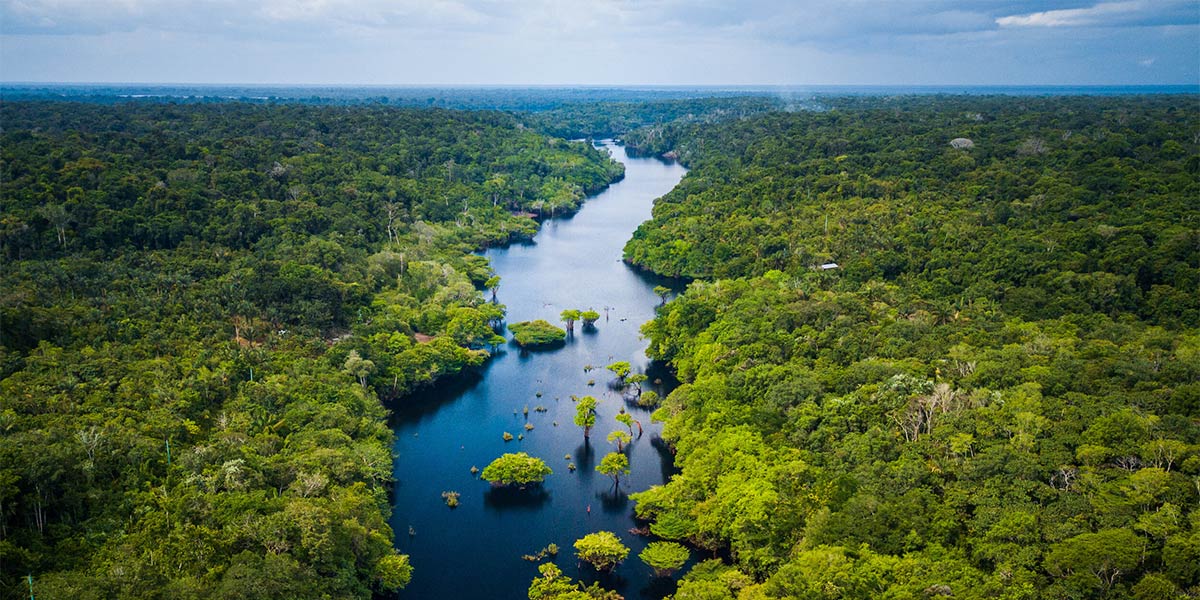
Main destinations in the Peruvian Amazon
Exploring the Peruvian Amazon rainforest is discovering a diverse territory, with low, high, and transition zones that offer different experiences in each region. From great rivers and natural reserves to cloud forests and research centers, each destination has its own appeal. Places like Iquitos, Puerto Maldonado, Tarapoto, or the Madre de Dios region are ideal for a trip full of nature, culture, and adventure. Below, we present some of the main destinations in Peru and the Amazon:
1. Iquitos and the Pacaya Samiria National Reserve
Located in the northeast of the country, Iquitos is the gateway to the Peruvian Amazon. From here, river tours can be taken to the Pacaya Samiria National Reserve, one of the largest in the country, known as “the jungle of mirrors” due to its reflective rivers. The tour through the Amazon of Iquitos allows you to observe pink dolphins, visit riverside communities, and explore an almost untouched environment.
2. Manu National Park
Considered one of the most biodiverse areas in the world, Manu National Park extends between Cusco and Madre de Dios. It is ideal for wildlife lovers, as it offers tours through the Manu jungle where it is possible to see macaws, jaguars, monkeys, and hundreds of bird species. The Manu tours Peru include hikes, boat trips, and visits to clay licks, unique observation areas within the park.
3. Puerto Maldonado and the Tambopata Reserve
Puerto Maldonado is one of the most accessible points in the Peruvian Amazon. From here, you can access the Tambopata National Reserve, famous for its diverse fauna, lakes like Sandoval, and ecological lodges in the middle of the forest. This area is perfect for a deep nature experience without straying too far from a base city.
4. Tarapoto and the high jungle
Located in the San Martín region, Tarapoto is in the high jungle zone, a transition between the Andes and the Amazon. Its landscapes combine mountains, waterfalls, and tropical vegetation, making it a distinct option within the Peruvian Amazon jungle. It is an ideal destination to discover the Peruvian jungle in a more accessible way, with hikes, tours to waterfalls, and visits to local communities in the middle of the tropical rainforest.
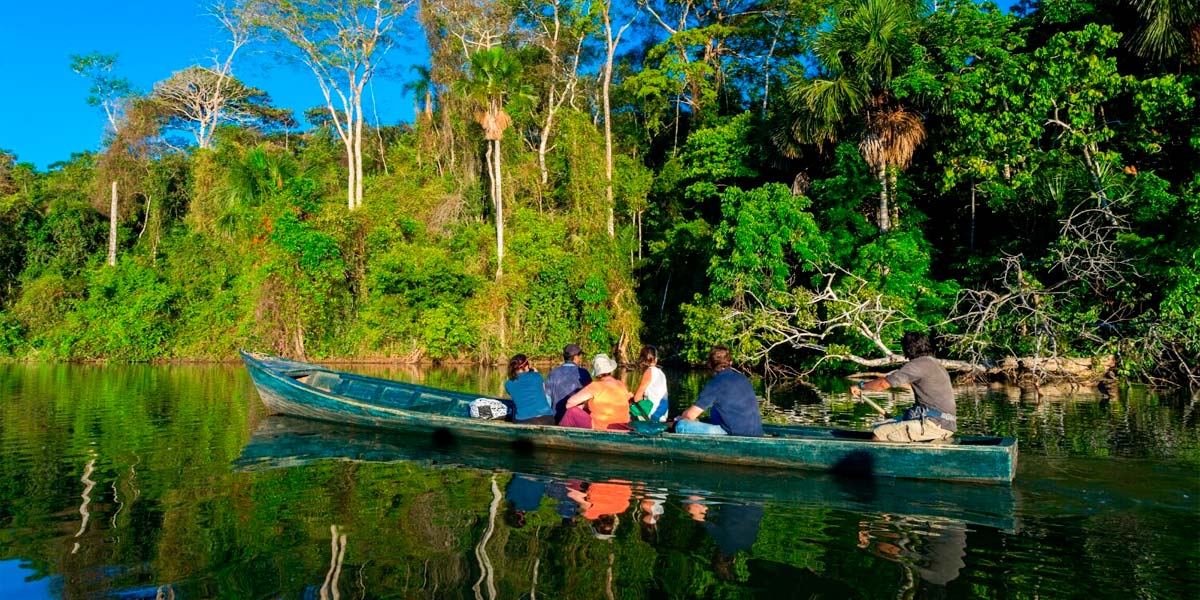
Unmissable experiences in the jungle
Traveling through the Peruvian Amazon jungle is discovering a world where every activity has something new to show. From waking up early to see the sunrise over the river to exploring the jungle at night, the experiences are diverse and exciting. The interesting thing is that many activities are combined with the local culture, which allows you to get to know not only the jungle, but also those who inhabit it.
In addition, there are options for all tastes: river tours, walks along ecological trails, visits to native communities, or simply resting in lodges that respect the environment. Whether in the Loreto, Madre de Dios, or Ucayali region, the Peruvian Amazon has something special for every traveler. Here are some experiences you can’t miss:
- Wildlife and Flora Spotting: One of the greatest attractions of the Peruvian Amazon rainforest is the possibility of observing its wildlife. On guided tours in the morning or at dusk, it is common to see birds such as macaws, toucans, and hoatzins; you might even spot the iconic “Andean Cock of the Rock“, as well as monkeys, caimans, sloths, and even pink dolphins in the rivers. Sightings occur both on dry land and from small boats in oxbow lakes and Amazon tributaries, which makes the journey more interesting.
As for the flora, the jungle is home to thousands of species of trees, orchids, medicinal plants, and gigantic specimens like the ceiba tree. Walking among this vegetation allows one to understand the importance of the ecosystem and how each element plays a vital role. Many local guides also explain the traditional use of plants by indigenous communities, adding cultural value to the tour. - Navigation on the Amazon River: Exploring the Amazon by navigating the Amazon River is a unique experience. Many of these journeys depart from Iquitos and can last a few hours or several days, depending on the route. Along the way, you will pass small towns, protected areas, and stretches of dense jungle where the river is the only way to access.
The interesting thing is that, when navigating, you access less touristy areas, and many circuits include stops to observe flora, swim in calm waters, or simply relax listening to the sounds of the environment. Navigating the Amazon is not just a means of transport; it is a different way of discovering the Peruvian jungle. - Visits to Native Communities: Visiting an indigenous community in the Amazon is an opportunity to better understand the culture of this region. Many of these visits are organized with respect and accompanied by local guides who explain the customs, language, clothing, and traditions of each town. Some communities offer dance demonstrations, gastronomic samples, or handicraft sales, which creates a direct exchange between visitors and residents.
- Eco-lodges and Night Walks: Staying in an eco-lodge is a comfortable and responsible way to explore the jungle. These structures are usually built with sustainable materials and are located in strategic areas near reserves or rivers. Many excursions depart from there, including night walks, one of the most exciting experiences. As night falls, the jungle changes completely: other fauna become active, sounds intensify, and everything becomes more mysterious. With a flashlight and a guide, the tour becomes an adventure that allows you to see insects, amphibians, and animals that only come out at dusk.
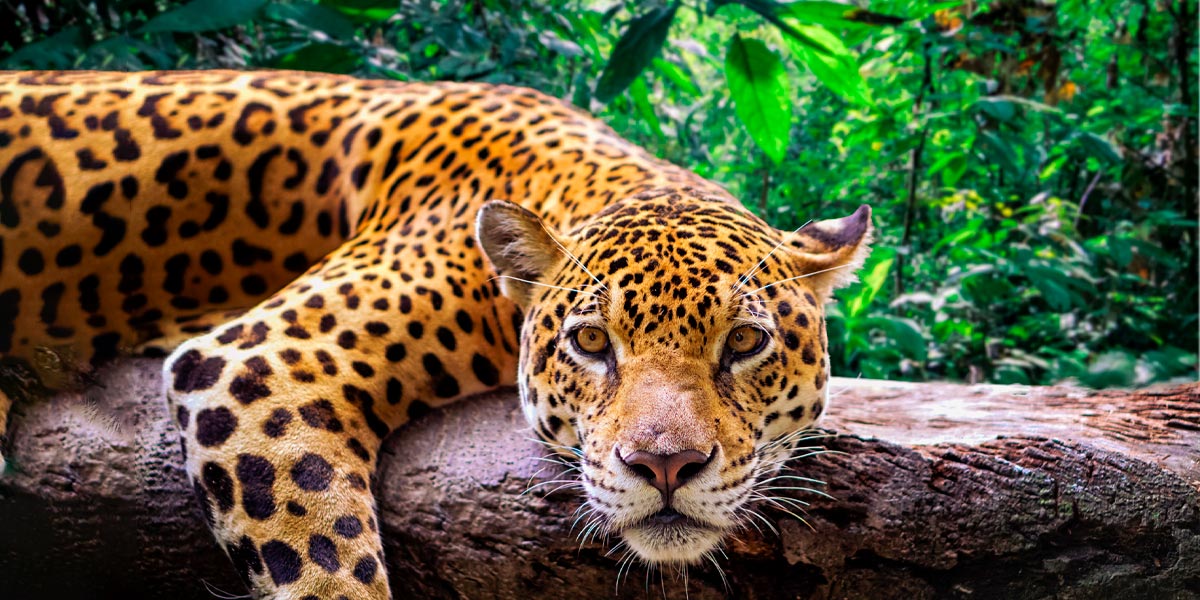
Recommended Tours in the Amazon Rainforest
Exploring the Peruvian Amazon through a tour is one of the best ways to make the most of this destination. The tours are designed for different types of travelers: from those seeking adventure in nature to those who prefer to learn about local cultures or combine their trip with other routes in the country.
From the Tambopata National Reserve to the river routes of Iquitos, including unique combinations with Machu Picchu or the Inca Trail, there are many options. Below is a list of the best “Amazonian tours in Peru” for you to plan your next adventure:
1) 3 to 5-day Tours in Tambopata
One of the most accessible destinations to explore the jungle is Tambopata, located in the Madre de Dios region. Here you can take tours lasting between 3 and 5 days, ideal for experiencing the essentials without long transfers. Most circuits include river navigation, forest walks, and visits to lagoons like Sandoval, where it is possible to see giant otters, birds, and caimans. In addition, lodges near the Tambopata Peru National Reserve offer complete programs, with specialized guides and activities that cover both flora and fauna.
Another advantage of Tambopata is that it is well connected from Cusco or Lima. This makes it an excellent option for those who want to explore nature without straying too far from the main tourist destinations. Excursions usually include visits to macaw clay licks, night tours, canopy walks, and moments of relaxation in the middle of the jungle. All this within a protected environment with high biodiversity.
2) Expeditions from Iquitos through the Amazon
Iquitos is where the journey through the Amazon River in Peru begins. From here, multiple excursions to the Peruvian Amazon depart, which can last between 3 and 7 days. The tours explore tributaries such as the Napo River or the Marañón River and cross sparsely intervened areas. The trips are carried out on small boats or floating lodges, allowing you to explore different sections of the river and its surroundings.
The appeal of Amazon tours in Peru is that they combine nature and culture. You visit natural reserves, take guided walks, and get a close look at the riverside lifestyle. Some routes even reach protected areas such as the Pacaya Samiria National Reserve, one of the most biodiverse places in the country.
3) Tour on the Inca Trail and the Amazon
A different way to discover Peru is to combine trekking in the highlands and nature in the jungle. There are circuits that connect the Inca Trail and the Amazonian adventure, where you do the classic trek to Machu Picchu and then continue the journey to jungle areas such as Tambopata or Manu. This combination allows you to discover two of the most important ecosystems in the country on a single route.
Jungle trekking in the Amazon is different from that in the highlands, but just as interesting. You walk along humid trails, cross streams, and observe species that only live in this environment. Some tours offer overnight stays in ecological lodges after the Inca Trail, which provides a natural and relaxed end to the previous physical effort.
4) Jungle and Machu Picchu Tour
Another very popular alternative is to combine a visit to the Inca citadel of Machu Picchu with a jungle experience. There are Machu Picchu circuits that include days in the Madre de Dios region, where you can enjoy boat trips, wildlife sightings, and walks through tropical forests before or after visiting the famous Inca ruin.
Many tours already include everything: transportation, guide, accommodation in lodges, and Machu Picchu tickets. This makes organizing the trip easier and allows for a comfortable transition between such distinct landscapes. It is a balanced itinerary that combines history, adventure, and nature, perfect for a complete trip without logistical complications.
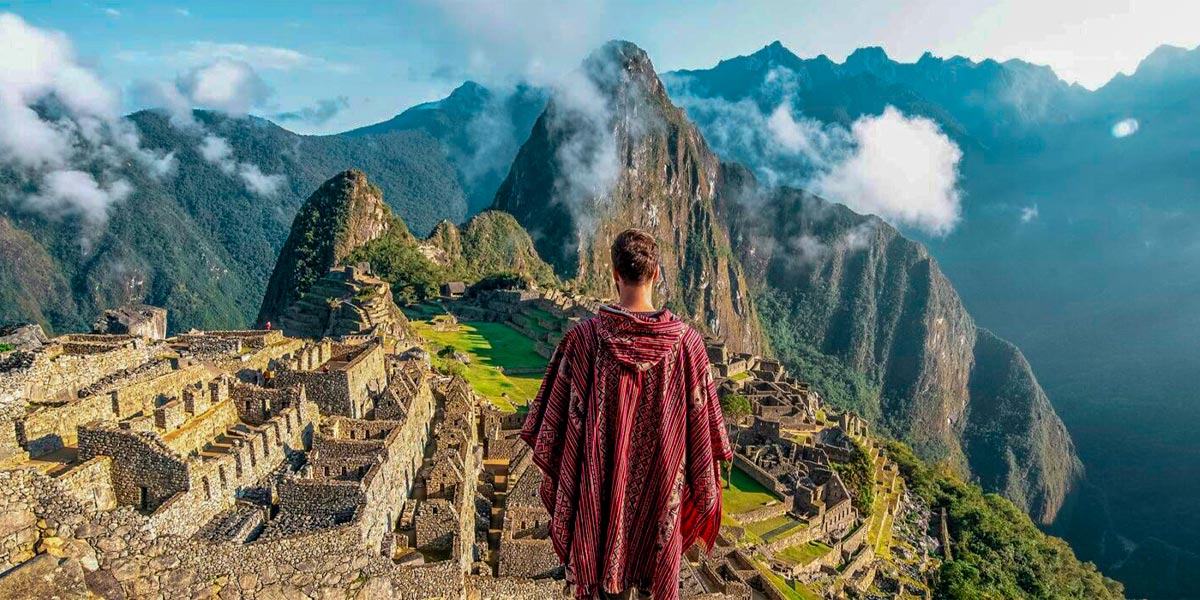
How to combine the Amazon rainforest with Machu Picchu?
A trip that connects the Amazon rainforest and Machu Picchu is one of the most complete routes in Peru. This combination allows you to explore two distinct worlds: the wild nature of the Amazon and Inca history high in the Andes. The interesting thing is that the route is increasingly accessible and suits both travelers seeking adventure and those who prefer organized experiences.
Many agencies offer tours that combine both destinations into a single itinerary, including flights, transfers, and excursions. In just a few days, you can go from navigating the Amazon to exploring the ruins of Machu Picchu at dawn.
- Most common routes: Cusco – Puerto Maldonado – Machu Picchu: One of the most recommended routes is to start in Cusco, fly to Puerto Maldonado to explore the jungle, and then return to Cusco to take the train to Machu Picchu. It can also be done in reverse. This route allows you to make better use of your time and reduces overland travel.
- Flights, connections, and logistics: Puerto Maldonado has direct flights from Lima and Cusco, which facilitates connections between destinations. Airlines usually operate daily routes, and the airport is close to several lodges and reserves. From Cusco, it is also easy to get to Ollantaytambo to take the train to Aguas Calientes. To avoid delays, it is recommended to book everything in advance and allow at least one night of rest between flights and tours.
- Ideal for trips of 7 to 10 days: An itinerary of between 7 and 10 days allows you to enjoy both destinations at a relaxed pace. For example, 3 nights in the jungle, 2 in Cusco, and 2 in Machu Picchu are enough for a complete experience. If you have more days, you can include other stops such as the Sacred Valley or a visit to Iquitos to explore the northern part of the Amazon.
Tips for a safe and sustainable trip
Traveling through the Peruvian Amazon rainforest requires preparation. The climate, vegetation, and distances make it important to bring the right equipment and take certain precautions. In addition, it is key to protect the environment and respect conservation rules, especially if visiting reserves or communities.
- What to bring to the jungle: Lightweight, quick-drying, long-sleeved clothing, insect repellent, sunscreen, a hat, a headlamp, and a reusable bottle. It is also useful to bring a waterproof jacket, closed shoes for hiking, and personal medications. Some lodges offer boots and ponchos, but it is best to check before traveling.
- Best time to visit: The Amazon can be visited all year round, but the best time is between May and October, during the dry season. There is less rain, the paths are more accessible, and wildlife observation is easier. In the rainy season (November to April), some paths flood, although the jungle is greener and the landscapes are different.
- Health and Environmental Care Recommendations: Before traveling, it is recommended to inquire about vaccinations such as yellow fever and carry a basic first aid kit. It is important to avoid the use of single-use plastics, not to leave waste in the jungle, and always follow the guides’ instructions. If you visit native communities, respect their rules, avoid taking photos without permission, and support fair trade by buying local products.

